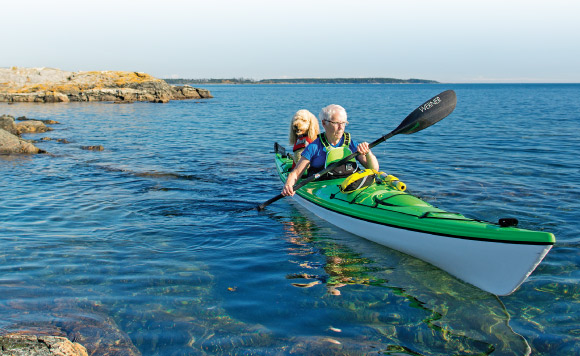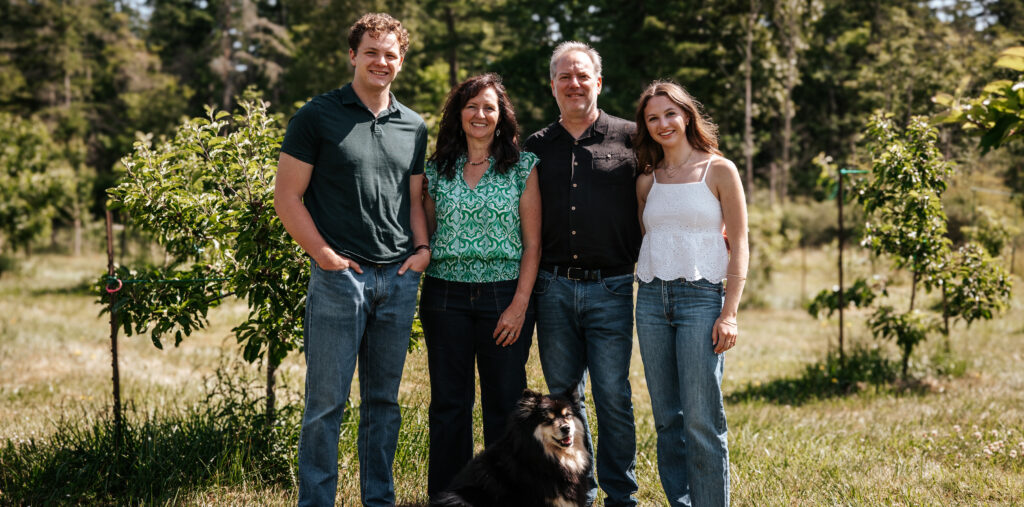Has the ocean always been a passion of yours? Paleoceanography seems to be an incredibly specialised field, how did you end up becoming a world leader in this area?
My passion began when I was young with family vacations to the coast, and a high school physics teacher who helped me shape the beginning of a career path. He explained the field of ocean engineering to me – how math and science could combine to make things work better – and really fueled my desire to purse an education in ocean engineering. Some great instructors and mentors at university further focused my direction. I learned how science could offer better decision-making today through understanding the earth’s geologic history … that we could actually drill down deep beneath the seafloor, as we did in the Arctic Ocean, and retrieve sediment samples from hundreds of millions of years ago, to help us reconstruct the past and provide evidence of climate change on a planetary scale. What I love about engineering is the fact you can take practical tools and apply them to important ocean science problems.
Your current post is President and CEO of Ocean Networks Canada, which operates the world-leading NEPTUNE and VENUS cabled ocean observatories. Can you explain the type of research that goes on and its implications to us both locally and globally?
Ocean Networks Canada is a world leader in ocean observing technology. We’re an initiative of the University of Victoria, located right on the doorstep of Vancouver Island communities. We like to be on the leading edge of new science, offering new ways to enable scientists to pursue their research – that’s what keeps us at the forefront. And our data – including the live streaming video from our cameras on the seafloor – is free to anyone with an Internet connection. Our observatories, connected by almost 900 kilometres of cable, continuously monitor a wide range of study areas that attract scientists from around the world. These stretch from the coastline and continental shelf, across the Juan de Fuca tectonic plate to the mid-ocean ridge where new crust is being formed and extraordinary communities of animals thrive around volcanic vents.
Long-term observations by ONC support such a diverse range of research: climate change adaption, earthquake and tsunami warnings, key marine species such as salmon and orcas, and even the complex interactions between the atmosphere and the ocean.
Living on the west coast we are constantly in touch with the ocean and see the way it connects to our lives, do you notice that different countries will approach the topic of ocean research and protection in different ways?
Most of the western world approaches ocean protection in much the same way. There are various differences in their abilities because of the way their funding is structured or the way universities are structured vurses government labs. The big difference is in developing countries, who don’t have the resources. For example, when I worked in Thailand following the tsunami, after it destroyed everything, the country immediately rebuilt, very quickly, without really doing analysis about what makes sense in the ways we rebuild because they didn’t have the research infrastructure. So there needs to be a lot more assistance in those countries that are vulnerable. One of the ways to address this discrepancy is to bring young scientists from these countries to the west in an exchange. That’s really how you can make change.
What drives you to keep going when facing challenges to achieving your vision for ocean science and technology?
There are a million great ideas for innovation and the only way you achieve innovation is through dogged persistence. I believe in innovation. I believe that humans are innovative. There are so many great ideas, but in order to succeed at innovation, you need to be persistent and stick with your ideas to achieve them. And then you don’t need to worry about what others are doing.
You will be a keynote speaker at the upcoming BC CFUW conference at the Mary Winspear Centre, the conference theme is ‘Harnessing the Power of Waves’ – what does that mean to you?
When I think about waves, I think about tsunami waves first, because in the 2004 Indian Ocean tsunami, that wave travelled around the world three times. The earthquake that generated that wave was the equivalent of 20,000 Hiroshima bombs. There is incredible power in the ocean but when I think more about it, the regular waves in the ocean are a wonderful source of renewable energy. So there’s the destructive part of this power and then there’s the incredible resource that we have.
The Smart Oceans™ initiative is an innovative project to harness science and research for the benefit of Canadians. Can you explain what Smart Oceans™ is and with investment from the government of Canada, how you see this type of research benefiting residents here on Vancouver Island?
Smart Oceans™ is the next step in our evolution, a broad initiative that aims to enhance public safety, marine safety and environmental monitoring for B.C. coastal residents. We’re planning to install five new ‘community’ observatory systems at strategic locations on the coast over the next two years, along with weather stations and a number of high frequency radar systems to detect waves. With support form Western Economic Diversification and Transport Canada, we’re designing these new observatories with a 20-year life span to serve the research community but also to focus on the concerns and interests of the surrounding local community.
We are looking at green issues in this month’s Seaside Magazine – as an individual it can seem overwhelming sometimes to know what to do to make a difference. What are your thoughts on our personal responsibility towards the environment?
If you think about the words ecosystem and economy, they are from the same source. So it’s about how we live on this planet, not necessarily about the environment … and us. When you talk that way, it feels as though we are separate. But humans are a part of the ecosystem. My personal responsibility then, because I think I understand this, is to help others understand that it’s not a choice between being an environmentalist or not. It’s an understanding that we are part of the ecosystem and we’re altering that ecosystem in ways that haven’t been done in 55 million years. So by understanding that, people can act. You can’t push someone to do something unless they understand it. So that’s what I think scientists have to do. Personally, I drive an electric car, I try not to travel too much, I’m a vegetarian … I certainly try!
Kate Moran
President and CEO, Ocean Networks Canada
Dr. Kate Moran is the President and CEO of Ocean Networks Canada, a world-renowned ocean engineer, Moran started at ONC as the Director of NEPTUNE Canada in 2011, following a two-year term as assistant director in the White House Office of Science and Technology Policy in Washington, DC. She is an outstanding presenter, helping people understand complex issues about the sea floor and is involved in cutting-edge research on earthquakes.




